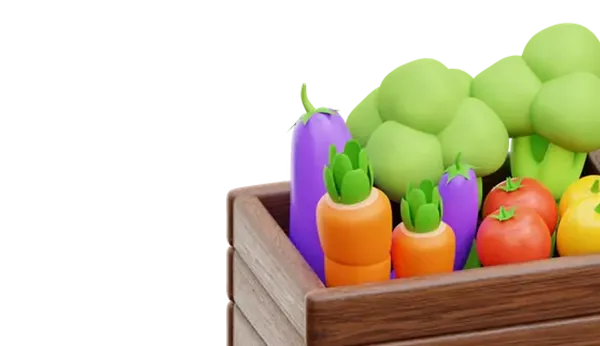Before starting to work with seeds, make sure of their quality and freshness. If you have your own seeds, store them in a dry and cool place. In most cases, purchased seeds are already treated and ready for planting.
Some gardeners prefer to stratify seeds to increase their germination rate and speed up sprouting. To do this, you can place the seeds in moist cloth or cheesecloth and leave them in the refrigerator for 1-2 days. Then let them dry a bit before planting.
A universal soil for vegetables or a mix of peat, sand, and compost in equal proportions is suitable for growing broccoli seedlings.
Before using the soil, it is recommended to disinfect it to destroy any potential pathogens. This can be done by baking the soil in the oven at 180°C for 20 minutes or pouring boiling water over it.
Broccoli seeds for seedlings are sown in April, 45-55 days before the intended transplantation into open ground.
1. Fill containers with prepared soil, slightly compacting it, and make furrows 1-1.5 cm deep.
2. Place the seeds 2-3 cm apart from each other.
3. Cover the seeds with a thin layer of soil and lightly tamp it down.
4. Water the sowing generously with warm water from a sprayer to avoid damaging the topsoil layer.
5. Cover the containers with plastic wrap or glass to create a greenhouse effect and place them in a warm place with a temperature of +20…+25°C.
After the appearance of seedlings (usually within 5-7 days), remove the plastic wrap and transfer the containers to a cooler place with a temperature of +16…+18°C to prevent seedlings from stretching.
Broccoli seedlings need bright light. In case of insufficient natural light, it is recommended to use additional light sources, such as grow lights. The duration of the light day should be at least 12-14 hours.
Water the seedlings moderately, avoiding soil drying out or overmoistening. The water should be room temperature; the optimal choice is bottom watering, by placing the containers in a tray with water for some time. Ten to fourteen days after the appearance of seedlings, carry out the first feeding with a solution of complex mineral fertilizer. Repeat the feeding two more times with an interval of 10-14 days.
When broccoli seedlings develop their first true leaf (usually 2-3 weeks after emergence), it is time for pricking out. This involves transplanting plants into separate containers for further growth and development.
1. Prepare individual pots or trays with a diameter of 8-10 cm, filling them with the same soil used for sowing.
2. Carefully remove the seedlings from the common container, trying not to damage the roots.
3. Transfer each plant to a separate container, burying it up to the seed leaves.
4. Water the transplanted seedlings thoroughly and place them in a shady place for 2-3 days for acclimatization.
Start hardening off the seedlings 10-14 days before transplanting them into open ground. Gradually increase the time the plants spend outdoors, starting from 1 hour and extending it to a whole day. This will help the seedlings adjust to outdoor conditions and make them more resistant to temperature fluctuations.
Plant broccoli seedlings in open ground when they reach a height of 10-15 cm and have 4-5 true leaves. This usually happens in early June, when the threat of frost has passed.
Tips for planting broccoli seedlings
1. Choose a sunny spot with fertile and well-drained soil.
2. Dig holes 40-50 cm apart in a row and 50-60 cm between rows.
3. Add some compost or manure to each hole and mix well with the soil.
4. Gently remove the seedlings from the containers with the soil clump and place them in the holes.
5. Plant the seedlings up to the level of the first true leaf and firm the soil around the stem.
6. Water the planted seedlings generously.
After planting the seedlings in open ground, continue to care for the plants to ensure their normal growth and development.
Regularly water broccoli, keeping the soil moist but avoiding overwatering. Usually, watering is done 1-2 times a week depending on weather conditions.
Two to three weeks after planting, apply the first feeding with a solution of chicken or cow manure in a ratio of 1:10. Repeat the procedure 1-2 more times with a 2-3 week interval.
Regularly loosen the soil around the plants to improve aeration and remove weeds. This also helps prevent soil crust formation.
Broccoli can be affected by pests such as cabbage flea beetles, cabbage moth caterpillars, diamondback moths, and other pests. As a preventive measure, you can use folk remedies like garlic or tobacco infusions, as well as biological preparations. Monitor any signs of disease closely and take action as needed.

 Trading platform
Trading platform 
 Monitoring
Monitoring  Express applications
Express applications 
 Fork Work
Fork Work 
 Service
Service  News
News  Directory
Directory 













